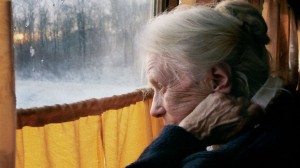For this edition of Russian History Blog’s “Blog Conversations,” we have gathered a distinguished group of scholars to discuss Polly Jones’s new book, Myth, Memory, Trauma: Rethinking the Stalinist Past in the Soviet Union, 1953-1970 (Yale University Press, 2013). Having devoted our blog to a discussion of The Stalin Cult two years ago, it seems only fitting that we discuss Soviet attempts to cope with that cult and other difficult aspects of the Stalinist past in the first two decades after the dictator’s death.
Generally, we have thought of this “thaw” primarily through through the lenses of Khrushchev’s “secret speech” at the 20th Party Congress in 1956, the removal of Stalin’s body from the mausoleum after 1961’s 22nd Party Congress, the publication of Aleksandr Solzhenitsyn’s One Day in the Life of Ivan Denisovich and a few other notable works in the journal Novyi mir, only to have the “thaw” undone by Khrushchev’s ouster in favor of Leonid Brezhnev in 1964. Jones draws on a wide array of sources and intellectual approaches to paint a more complex and more interesting picture of Soviet approaches to the Stalinist past during and even after the Khrushchev years.


